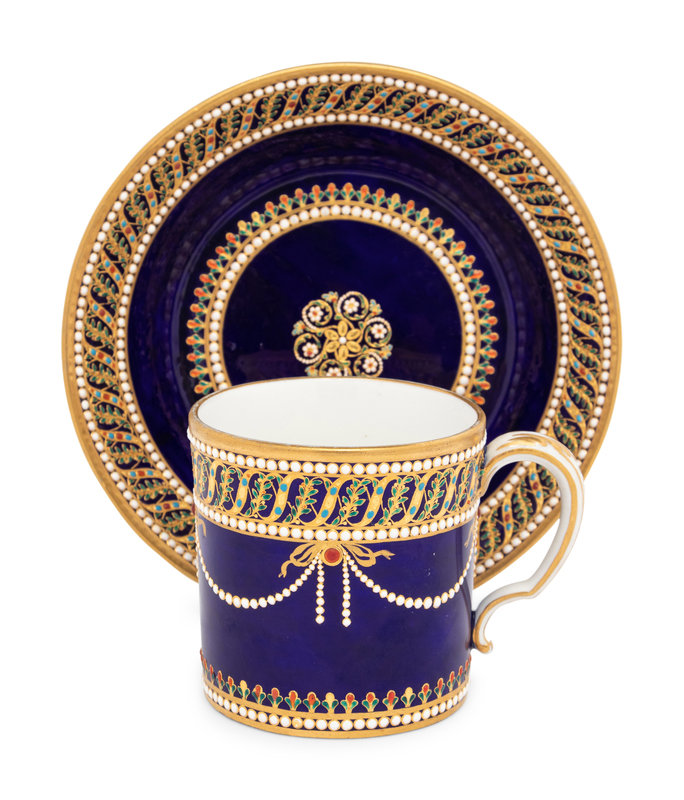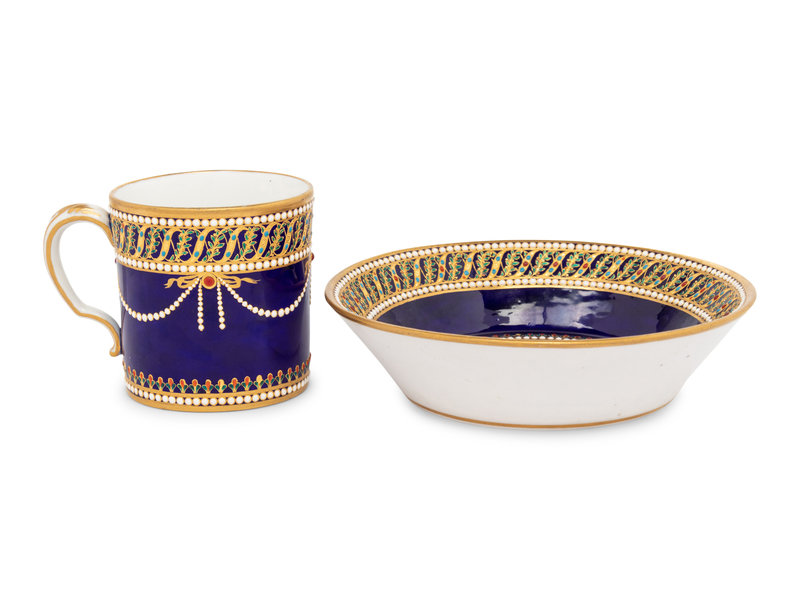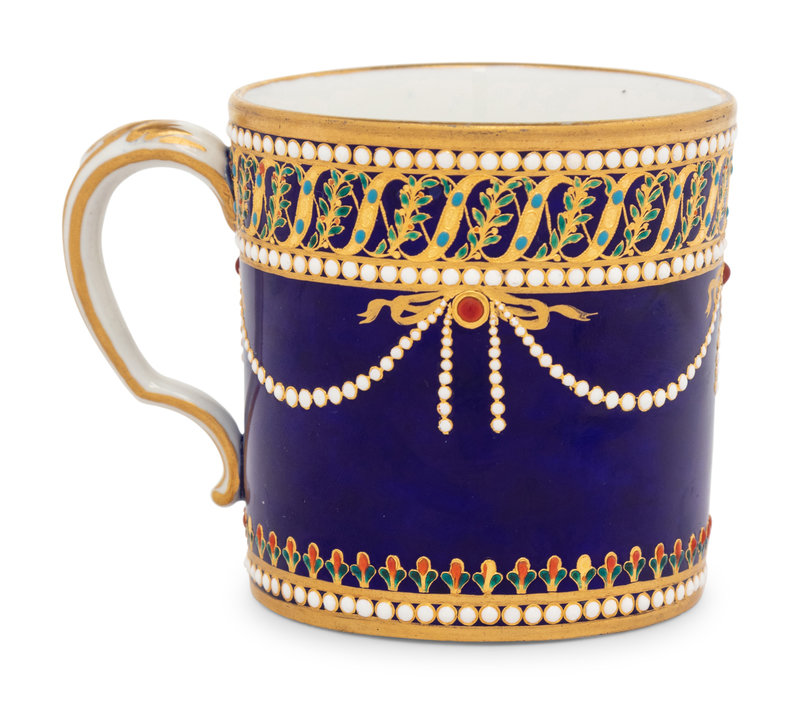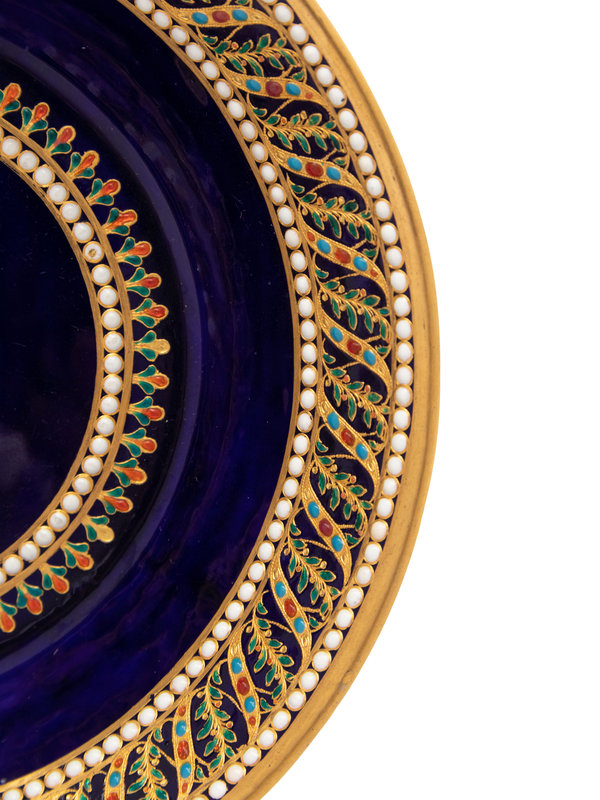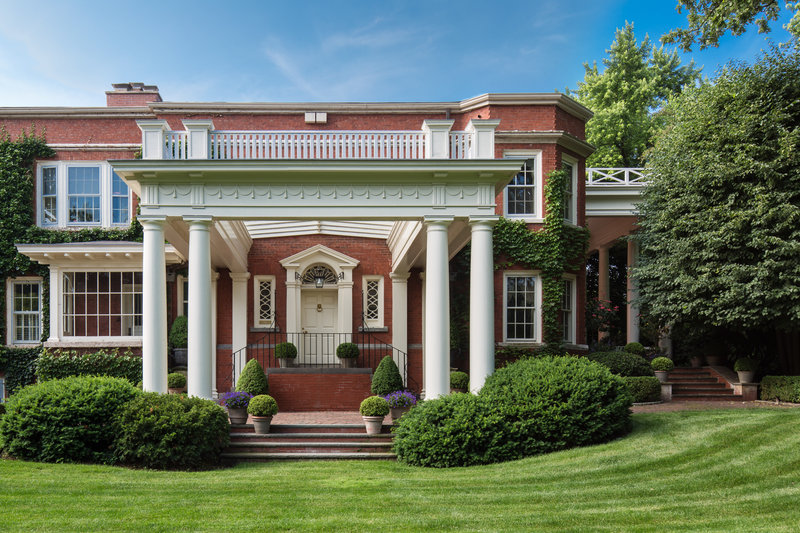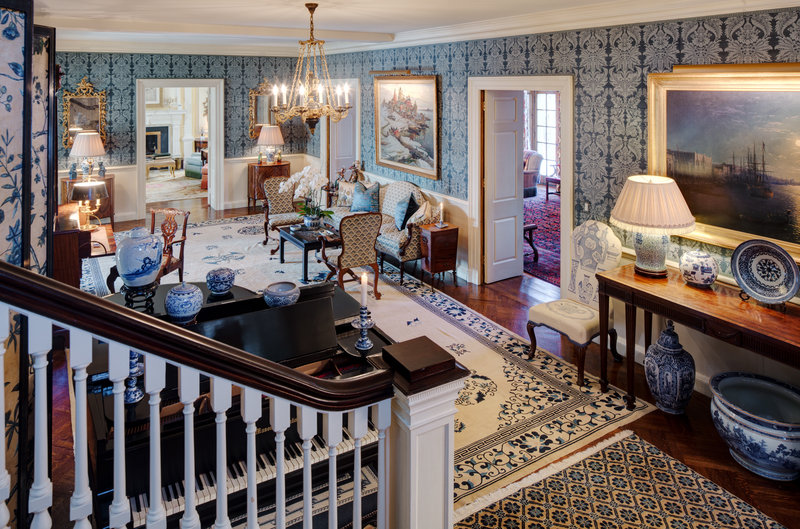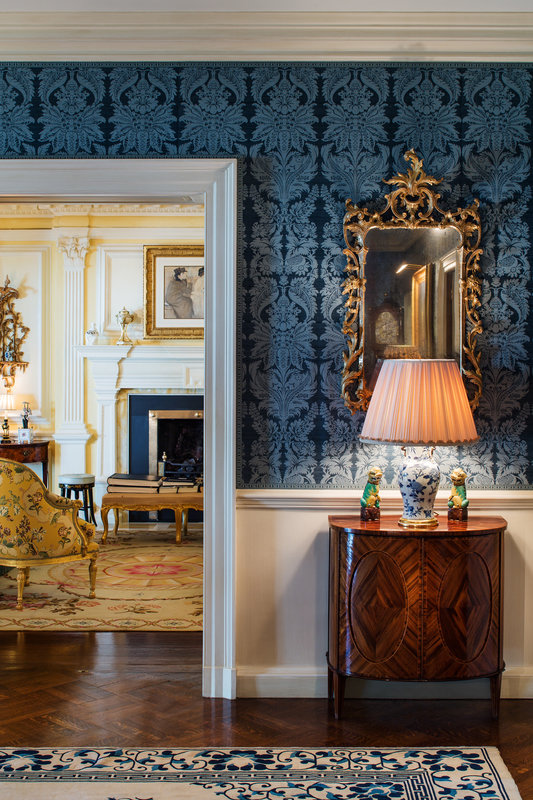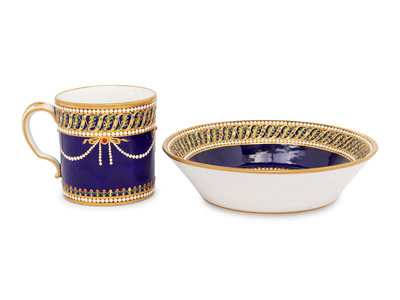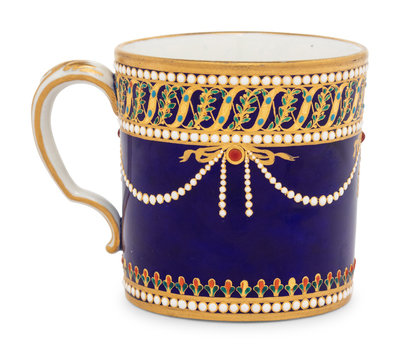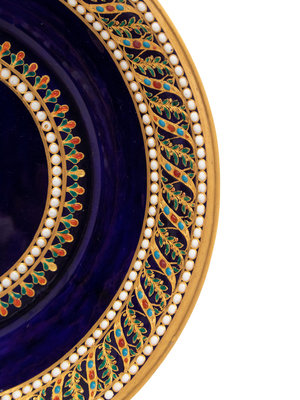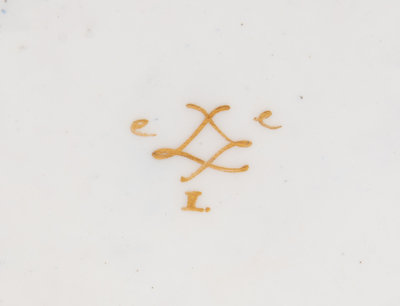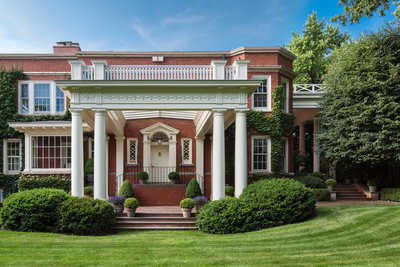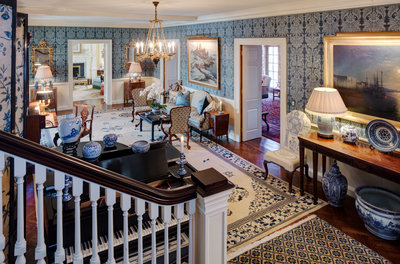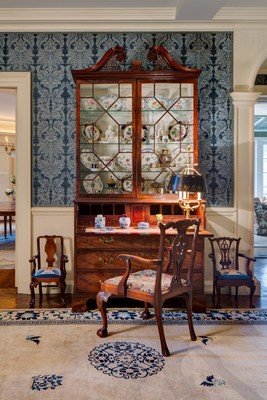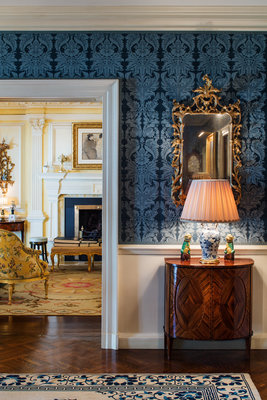Condition Report
Contact Information
Auction Specialist
Lot 33
A Sèvres Partially Beau Bleu Jewelled Porcelain Coffee Can and Saucer (Gobelet 'Litron' et sa Soucoupe, 1ère Grandeur)
Sale 1157 - Property from the Fred and Kay Krehbiel Collection, Part I
Mar 15, 2023
10:00AM CT
Live / Chicago
Own a similar item?
Estimate
$3,000 -
5,000
Price Realized
$21,420
Sold prices are inclusive of Buyer’s Premium
Lot Description
A Sèvres Partially Beau Bleu Jewelled Porcelain Coffee Can and Saucer (Gobelet 'Litron' et sa Soucoupe, 1ère Grandeur)
The Porcelain Circa 1782
both bearing gilt interlaced Ls mark flanked by date letters ee above decorator’s mark L. for L’Ecot, the cup further incised 73, the saucer incised 38A; jewelled between bands of white enamel ‘pearls’ with a wide band of gilt foil interlaced S-scrolls enriched with turquoise and red cabochons, the cup with gilt ribbon-tied white beaded swags suspended from the band running around the mouth of the cup, the saucer with a central medallion.
Height of cup 2 7/8 inches; diameter of saucer 6 1/8 inches.
Height of cup 2 7/8 inches; diameter of saucer 6 1/8 inches.
This lot is located in Chicago.
